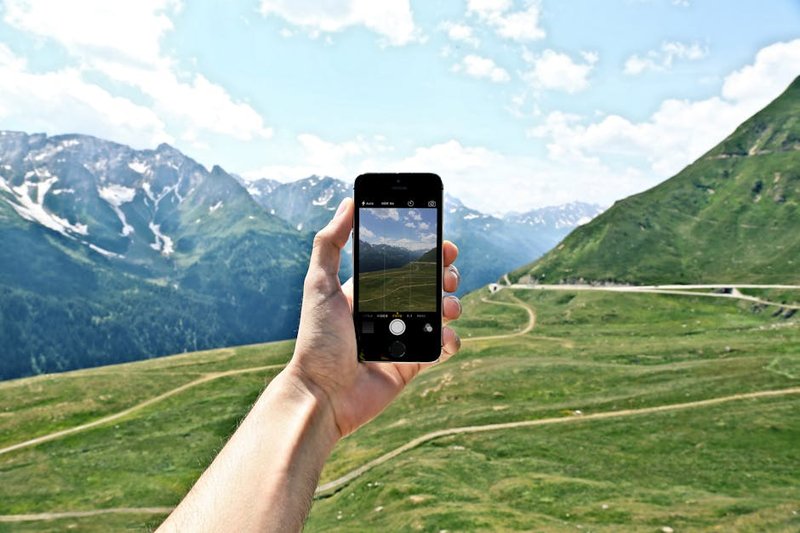“I’m not convinced AI will revolutionize destination marketing the way everyone claims,” says Rachel, digital strategist at a mid-sized DMO, leaning back in her chair. “We’ve seen tech promises before that ended up creating more work than solutions.”
Tom, who heads AI implementation at a tech consultancy, nods thoughtfully. “That’s a fair concern. I’ve seen organizations jump into AI without clear strategies, only to be disappointed.” He pauses, reconsidering his position. “But the difference with generative AI is its adaptability to specific DMO challenges. It’s not just automating tasks—it’s enhancing human creativity.”
Rachel raises an eyebrow. “Like what exactly? Our team already struggles with learning new platforms that supposedly save time.”
“Take custom itinerary creation,” Tom responds, warming to the subject. “DMOs spend countless hours crafting personalized guides. AI can generate these in seconds based on visitor preferences, freeing staff to focus on relationship-building and strategic initiatives.”
Rachel considers this. “I’ve tried some AI tools for content, and most output sounds… generic. Our destination has unique character—visitors come to us for authenticity.”
Rachel – The Human-AI Partnership in Destination Marketing
“That’s precisely where the misunderstanding occurs,” Tom explains. “The most effective implementations aren’t about replacing the human element but amplifying it. AI handles the repetitive scaffolding while DMO staff infuse local expertise.”
Rachel nods slowly, a hint of recognition crossing her face. “We did experiment with using AI for meeting preparation research. Gathering stakeholder information that would’ve taken hours was condensed to minutes. I’ll admit that was helpful.”
“Exactly,” Tom says, leaning forward. “And according to Direct Digital Holdings’ new guide, DMOs are finding success with AI for social listening and crisis management. The technology can monitor public sentiment across platforms and help develop rapid response strategies when issues arise.”
“But that raises questions about accuracy,” Rachel interjects. “What if the AI misinterprets sentiment or generates inappropriate responses during a crisis?”
Tom hesitates. “You’re right to be cautious. AI requires oversight, especially in sensitive situations. The best approach combines AI-powered monitoring with human judgment for response execution.”

Rachel – Practical AI Applications Transforming DMO Operations
Rachel reaches for her tablet. “Let me show you something. We tried using AI for visual content creation for our last trade show. The results were… mixed at best. Some images looked professional, others had strange distortions.”
Tom nods sympathetically. “Visual AI has limitations, but it’s improving rapidly. Many DMOs are using it for initial concepts, then having designers refine them. This workflow accelerates production while maintaining quality control.”
“That sounds more reasonable,” Rachel admits. “I’m particularly interested in how AI might help with our RFP processes. We’re constantly responding to event planners, and it’s time-consuming to customize each proposal.”
Tom brightens. “That’s where AI shines. It can analyze historical RFP data, customize responses based on specific requirements, and even predict what aspects of your destination might most appeal to each client. Direct Digital Holdings mentions DMOs reducing RFP response time by up to 70% while increasing personalization.”
“I find that hard to believe,” Rachel says skeptically. “Our RFPs require careful attention to detail and local knowledge.”
“The key is appropriate implementation,” Tom explains. “AI handles the first draft based on parameters you set, then your team reviews and enhances it with specific local insights. It’s never about removing humans from the equation.”
Data Analysis and Performance Reporting
Rachel’s expression shifts from skepticism to curiosity. “Our biggest challenge might be data analysis. We collect mountains of information from campaigns, visitor behavior, and economic impact studies, but extracting meaningful insights is overwhelming.”
“That’s where many DMOs see immediate ROI,” Tom says. “AI can process vast datasets to identify patterns humans might miss. For instance, correlating weather patterns with visitor engagement on specific attractions, or identifying which content themes drive higher conversion rates for different demographics.”
Rachel nods, genuinely intrigued. “Our board constantly asks for more granular reporting. If AI could automate some of that analysis and visualization…”
“Exactly. And the technology can suggest optimization strategies based on those insights,” Tom adds. “It becomes a continuous improvement cycle—data informs strategy, which generates new data, creating a virtuous loop.”
“I’m still concerned about implementation challenges,” Rachel says. “We don’t have a dedicated tech team, and previous technology rollouts have been rocky.”
“That’s a valid concern,” Tom acknowledges. “The guide emphasizes starting small—identify one specific pain point, implement a targeted AI solution, measure results, then expand. Success builds confidence.”
Beyond Marketing: Operational Efficiency and Visitor Experience
Rachel leans forward, warming to the conversation. “Let’s assume we overcome implementation hurdles. What about visitor experience applications? That’s ultimately what matters most.”
“That’s where things get exciting,” Tom says. “Imagine AI-powered chatbots that provide instantaneous, personalized recommendations to visitors. Or augmented reality experiences that adapt based on visitor preferences and real-time conditions.”
“Some of our stakeholders—smaller attractions and businesses—worry these technologies will bypass them in favor of larger partners,” Rachel counters.
Tom pauses, considering this perspective. “That’s a risk, but thoughtfully designed AI can actually level the playing field. The system can be programmed to highlight unique, authentic experiences that might otherwise be overlooked in traditional marketing.”

Rachel nods slowly. “I can see value there. What about website optimization? Our site gets thousands of visitors daily, but conversion metrics could be better.”
“AI analysis can identify user patterns and friction points,” Tom explains. “Some DMOs are implementing dynamic content that adapts based on user behavior, geographic location, or even weather conditions at the destination. A visitor from Chicago searching during a winter storm might see different content than someone browsing from Miami.”
“That personalization could significantly improve engagement,” Rachel acknowledges. “And if it works automatically rather than requiring manual adjustments…”
“Exactly—it scales in ways traditional approaches can’t,” Tom says. “The question isn’t whether AI will transform destination marketing, but how DMOs will adapt to remain competitive as these tools become standard.”
Finding Balance in the AI Revolution
Rachel sits back, processing the information. “I still have reservations, but I see more potential than I initially thought. The key seems to be finding the right balance—using AI for what it does best while preserving the human expertise that makes destinations special.”
“That’s precisely it,” Tom agrees. “The most successful DMOs view AI as an enhancement to human capability, not a replacement. They’re thoughtful about implementation, starting with clear objectives rather than adopting technology for its own sake.”
“I suppose we could start with one focused application—maybe the RFP response optimization or data analysis—and measure results before expanding,” Rachel suggests.
“That’s the approach I’d recommend,” Tom says. “And remember that AI implementation is iterative. The technology improves with feedback and usage, becoming more aligned with your specific needs over time.”
Rachel nods, her initial skepticism transforming into cautious optimism. “Technology has always changed how we market destinations—from print to digital to social media. Perhaps AI is just the next evolution.”
“With one important difference,” Tom adds. “Previous technologies required humans to adapt to their limitations. AI increasingly adapts to human needs instead. That’s the paradigm shift that makes this moment particularly significant for destination marketing.”



